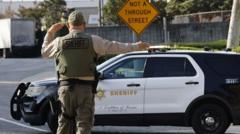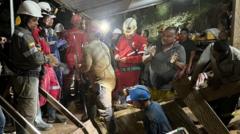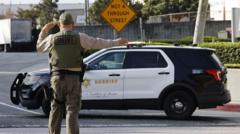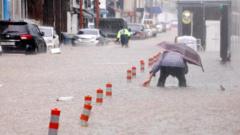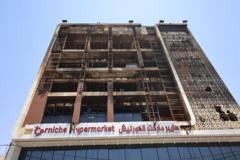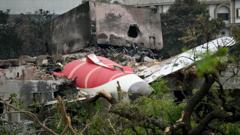Following a disastrous mid-air collision in Washington, DC, that resulted in 67 fatalities, officials revealed significant understaffing at air traffic control. Investigations into the incident continue as families mourn the victims.
Understaffed Air Traffic Control Linked to Fatal DC Crash, Officials Say
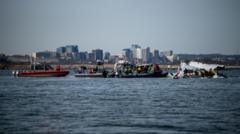
Understaffed Air Traffic Control Linked to Fatal DC Crash, Officials Say
Transportation Secretary points to "not normal" staffing levels amid investigation into tragic mid-air collision.
Air traffic control staffing was deemed "not normal" at the time of a deadly mid-air collision involving a military helicopter and a passenger plane in Washington, DC, which claimed 67 lives, according to Transportation Secretary Sean Duffy. Reports indicate that the Reagan National Airport tower was understaffed during the incident on Wednesday, as backed by a government analysis.
"I'll take the Federal Aviation Administration (FAA) at their word that it wasn't normal," Duffy stated during an appearance on FOX News Sunday when questioned about the situation. As of now, 55 victims have been recovered from the Potomac River, with divers still searching for 12 more.
The American Airlines flight had 64 passengers aboard when it collided with an army Black Hawk helicopter that carried three crew members. Remarkably, there were no survivors from either aircraft. Sources indicated to CBS News that only one air traffic controller was on duty managing both helicopter and plane traffic, a task typically handled by two individuals. Duffy admitted that this factor will be part of the ongoing review process.
There was a reported "consolidation" of air traffic controllers just one hour prior to the crash. Duffy has raised concerns regarding whether the controllers effectively directed traffic in accordance with FAA guidelines and the helicopter's altitude at the time of the incident. Initial data from the National Transportation Safety Board (NTSB) revealed that the helicopter was flying at around 200 feet, the ceiling height for helicopter flights in the vicinity of Reagan National Airport.
Duffy also questioned the rationale behind conducting the flight mission at 9 PM during peak air traffic hours rather than during quieter times. "I want our military to be trained and prepared, but safety must also be paramount for air travelers," he said.
Investigators are examining various factors surrounding the crash, although they have yet to release any public conclusions. Military officials indicated that the helicopter crew had an established mission protocol in Washington, providing daily support for army leadership and government officials.
During the conference, Duffy highlighted a broader issue of chronic understaffing in the U.S. air traffic control system. Reports suggest that over 90% of air traffic control facilities are not meeting FAA staffing recommendations. "[Air traffic controllers] are stressed out. They're tapped out. They're overworked. That’s a harsh reality of the situation," he remarked. He is working closely with the FAA to address staffing and training issues, while emphasizing that immediate solutions are not feasible.
As recovery efforts proceed, DC Fire Chief John Donnelly expressed confidence in fully accounting for all victims despite challenges in locating remains. However, he noted that a police diver had to be hospitalized for hypothermia during the search operations, though he is recovering.
On Sunday, dozens of families arrived at the crash site, accompanied by police, to pay their respects. The fire chief stated that he had met with grieving families who remain steadfast in seeking closure for their lost loved ones. Meanwhile, the Army is expected to begin lifting wreckage at dawn on Monday, pausing recovery operations if any remains are discovered.



